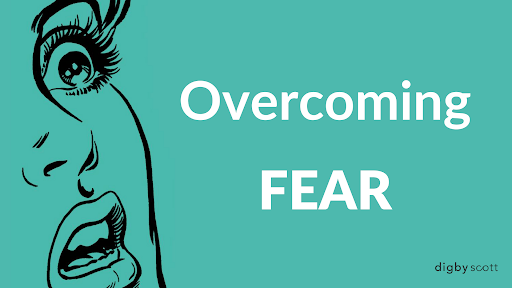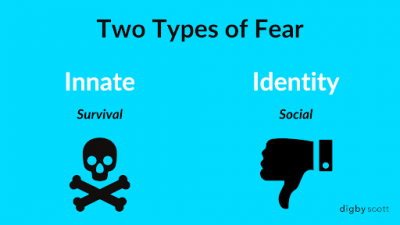
Overcoming Fear
9th Sep 2021
Fear does not stop death. It stops life.
Anon.
Fear. It’s part of who we are, yet it can stop us from becoming who we want to be. It keeps us safe, yet merely staying safe is no way to live.
Fear can shrink us. And it can liberate us.
Fear lies behind much of the messaging we absorb in our lives. From our media, from our politicians and even from our parents: it’s better to stay safe. You never know what bad things might happen.
Where there’s uncertainty, fear is usually lurking too. And there’s lots of uncertainty in the world today. In the face of a formidable enemy, we are wise to at first focus on safety. But, if we want to keep moving forward, focusing on staying safe isn’t enough.
I’ve certainly felt a continual low-grade anxiety over the past year, more than usual. I put it partly down to Covid, but not completely. I’m getting older, and I’m creating scenarios in my head for what that means. Will I be able to keep as active as I have been? Will I die before I get to do all of the things I want to do? Crazy stuff like that. It keeps me in a spin-cycle for longer than I’d like. I can hold back from taking action, I ruminate, and as a result, my mojo can drop. Not good.
In interesting times such as these, we need to learn how, as music producer Jimmy Iovine says, to “make fear a tailwind rather than a headwind.”
Last Friday, I hosted a webinar for the Change Makers community on Overcoming Fear. Here are some of the highlights from that session that I hope you’ll find useful as you lean into the fears you face:
Two types of fear
There are two core types of fear: Innate and Identity-based. Innate fear is about the avoidance of physical pain or death. It’s hard-wired into us, and it serves us well. Identity-based fear is about the fear of being judged, about being outcast, about not being accepted for who we are. One of our deepest needs as human beings is to belong. The fear of not belonging drives much of our thinking, feelings and behaviour.
85% of fears never happen
Most of what we fear is in our heads. And that’s where it stays. Research from Cornell University backs up Mark Twain’s classic saying “I’ve been through some terrible things in my life, some of which actually happened.” If we can remember that most fears are imagined, we can make them more of a tailwind.
Make fear a tailwind in three steps:
Name it. Ask yourself “What am I afraid of?” Naming it gets it out of your head and into the open where you can examine it.
Frame it. Take a good look at it and get objective. It helps to ask yourself these types of questions:
- What’s real, and what’s imagined? What am I assuming here?
- What’s the worst possible outcome? Could I cope with that?
- Where have I faced a situation like this before? What got me through that?
- What are the benefits of giving this a go?
- What’s the cost of inaction?
Tame it. You can make fear a tailwind by moving into deliberate action. Some brilliant ideas from the group on this point include:
- Just say ‘yes’, and make it public
- Take small steps and experiment
- Surround yourself with fearless people, and people who can remind you of your brilliance
- Focus on what you can control
- Know your conviction
- Don’t get too hung up on one thing. Keep moving forward.
Name it. Frame it. Tame it. A nice little mantra to help take your fears from headwinds to tailwinds.
Fear creates energy. If you can learn to use that energy to keep moving forward, life will be better for it.
Like this post? When you’re ready, here are three ways I can help you further:
- Sign up to my ‘Thinking from the Edge’ newsletter to get tips, insights and early release information that I don’t share on the usual social channels. Delivered weekly to your inbox.
- Get my book, Change Makers: How to make your mark with more impact and less drama. It’s available here.
- Check out Change Makers Co-Lab – an online course + community to help you make your mark with more impact and less drama.



